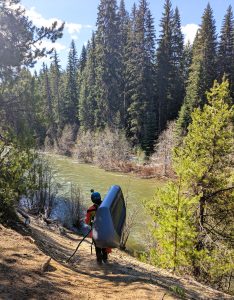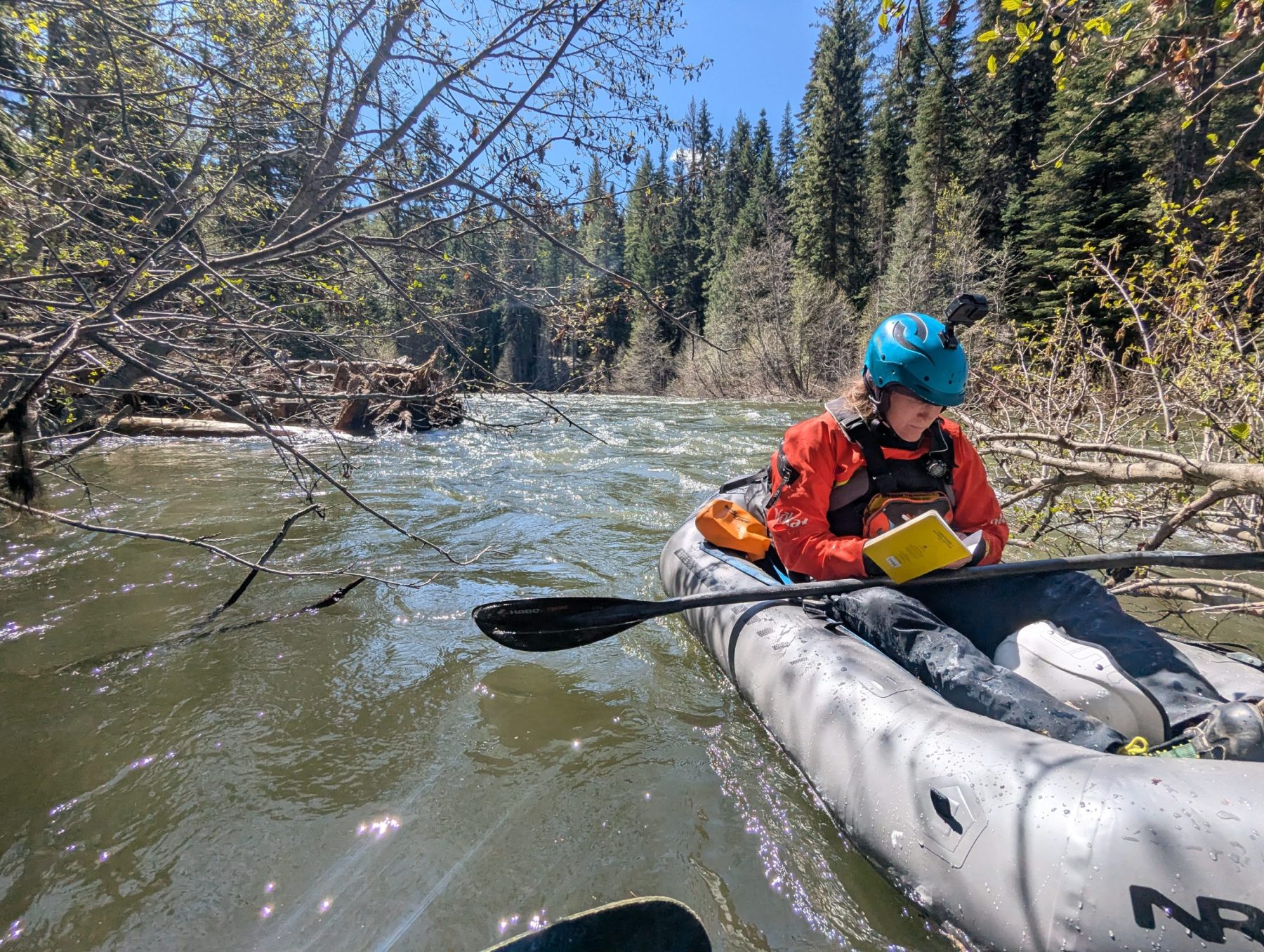by Susan Elliott
The trees rise like silent sentries. The current jolts beneath my boat—crisp, dynamic, relentless. I don’t stop it; I move with it, trusting decades of paddling muscle memory to carry me downstream. And still—25 years into this kayaking life—the Chiwawa River steals my breath as I launch.
The Lower Chiwawa isn’t just a river—it’s a living story of wild wood, carved valley walls, and whitewater rhythms. A flow that feels big in the moment, but ancient underneath.

Paddled the Chiwawa? Take the 5-minute survey. Your input could guide future river restoration and recreation planning.
The History of Stripping Rivers Clean
For centuries, rivers like the Chiwawa exemplified complexity with fallen trees, side channels, and logjams. But industrial use—logging, dams, flood control—changed that.
With European settlement in North America, Australia, and New Zealand, a deliberate effort began to remove woody debris. Snag boats tore out logjams. Deforestation and channelization left rivers in a “wood-impoverished state.” Over time, the sight of log-filled rivers became unfamiliar.
On the Chiwawa, traces of that wild past remain—gnarly jams and buried trunks. Though it was once cleared, the river’s isolation and forested slopes are helping it recover.

Reading the River for Hazards on the Chiwawa River
At medium flows (~1,300 cfs), the Chiwawa offers that ideal rhythm: fast, but readable. It sharpens my hazard sense—every bend could hold new wood.
I scan for changes—slumping banks, fresh trees in the water. Then I see it: a downed fir, still green, spanning the flow. We pull into a calm eddy. It’s a moment of discovery—a reminder that paddling is a conversation with something bigger than us.
We could call this a hazard, but really, it’s just an inconvenience. It’s not a flaw. With sound judgment, it’s just part of the river’s story.
The Chiwawa River reminds me how fun kayaking can be, but it also demands respect. Large wood can be dangerous if you’re not ready. But science tells us most river incidents stem from cold water, high flows, missing PFDs, or alcohol—not wood.
For skilled paddlers, logjams are puzzles, not roadblocks. And those tricky eddy moves? They keep us sharp.
Knowing the river builds awareness, if you don’t check out our Chiwawa River (lower) guidebook. Sharing what you learn helps others. Post trip reports and hazards on the American Whitewater page—it strengthens our shared knowledge and shows we’re paying attention.
Be Part of the Chiwawa’s Future
Public rivers like the Chiwawa don’t belong to one group—they’re shared and shaped by everyone who uses them. When we paddle, scout, fish, or camp, we become part of that river’s living story.
That’s why the Chelan County Natural Resource Department launched a brief Lower Chiwawa Recreation Survey—for anyone who uses the river between Huckleberry Ford and the Wenatchee confluence. Your input can help restoration teams balance healthy habitat with real-world recreation.
-
Have you paddled here?
-
When and at what flows?
-
Where do you access the river?
-
What are the key hazards or access issues?


